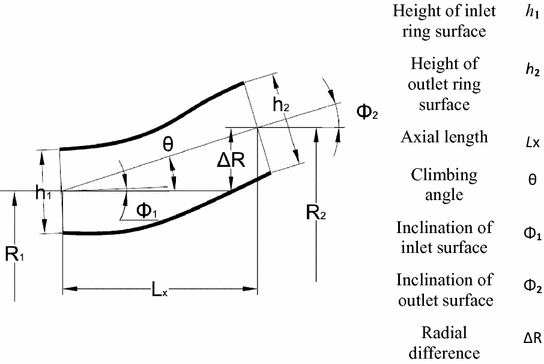Short answer
This space is part of the inter-turbine duct (ITD), a duct which is required to maintain a satisfactory flow continuity between HPT and LPT rotating at different speeds (in the ratio of 1:3) and having different diameters. The duct is made of the gap and the larger (in the axis direction) LPT stage 1 vanes.
Note this duct is a diffuser as the annular area is growing along the flow path. What happens in this diffuser is not very well known and its design has been empirical to some extend, using guides like this:

Pressure recovery vs friction. Source
Some numerical simulation demonstrated the design indeed influences the LPT (pressure loss in the duct), but also the HPT and the combustion. On days where saving 1% fuel (therefore 1% CO2) is important, some effort is now done on the optimization of the inter-turbine duct.
Shortened ITD are complex to design and known under the name of aggressive ITD.
Details
Taking the CFM56-7B (Boeing 737 NG) as an example. This engine has a single stage HPT and a 4 stage LPT.
Each rotor is preceded by stator (nozzle). The role of the stator vanes is to convert pressure into velocity and turn the flow more perpendicular to the rotor blades surface. This is opposite to the compressor stages where the vanes are downstream of the blades to convert velocity added by the blades into pressure, maintain velocity constant and straighten the flow.
Gap and larger vanes
Everything is globally continuous, though there is a a gap forward of the LPT stage 1 nozzle located in the HPT casing. The vanes themselves are larger axially.

CFM56-7B, small gap before LPT Stage 1 vanes
This location is called the inter-turbine (transition) duct, it corresponds to the interface between HPT and LPT which are rotating at different speeds.
The duct has an increasing area due to the larger diameter and size of the LPT stage 1 rotor (a similar duct exists between LPC and HPC for the same reasons).

Inter-turbine duct geometry. Source
The gap is chosen to set (empirically) the adequate duct slope, aspect ratio, etc for an acceptable pressure loss between the turbines.
To increase engine performance, manufacturers are trying to decrease the length of the duct but there is a lack of knowledge in this domain.
Shorter ducts are known as aggressive inter-turbine ducts (AITD). See this paper.
Bearings
Regarding the reason mentioned in another answer, a possible problem with a bearing or a bearing support in the way: This is not actual, the bearings are much smaller than the turbine stages:

CFM56-7B, location of rear bearings
- The No 4 bearing is between the HPT shaft and the LPT shaft.
- The No 5 outer support is within the oil collector, and the bearing itself is within the its support.







